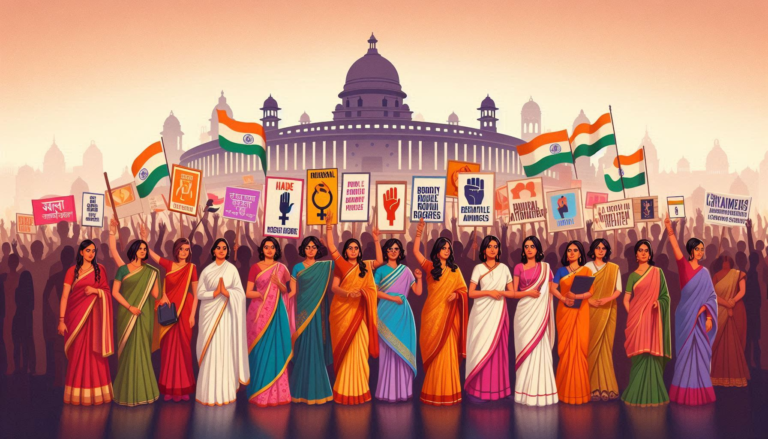
ABSTRACT
The following study aims to investigate the depiction of criminal psychology with a comparison to fictional pieces of male and female South-Asian writers. This study aims to highlight how writers in terms of their genders observe crime and portray it through their fictional characters. The comparison involves the deep analysis of well-known Pakistani writer Saadat Hasan Manto’s short story “Colder than Ice” with Indian Urdu-Novelist Ismat Chughtai’s story “Poison”. These stories revolve around the theme of murder and crime, the psychology of offenders, the complexity of human relationships, and the consequences of trauma. The theoretical framework followed throughout the research is cognitive criminal psychology theory which suggests that an individual’s awareness and how it is manifested affects his or her possibility to crime. The method for collecting and analyzing the data is the textual thematic study method that empowers to study and investigate the deep and underlying layers of meanings and themes in the text. This study is carried out with the purpose to highlight the south-Asian writers Saadat Hasan Manto and Ismat Chughtai’s contributions to the genre of crime and psychology. This study can bring a new aspect of psychological analysis for the other researchers working on the same writers and can allow them to study at different levels.
Keywords:
Criminal psychology, cognitive theory, fiction, South-Asian writers, Saadat Hussain Manto, Ismat Chughtai.
INTRODUCTION
Does one commit crimes because he is a criminal? Or he becomes a criminal when he commits a crime? Where breaking the rule makes you an offender and being offended makes you a victim. There are certain reasons why people are the way they are and they do what they have done. This is where the criminal psychology comes in. Since literature has a broad arena and every aspect of life falls under it criminal psychology has been portrayed with letter and spirit through various pieces of fiction including “Colder than Ice” and “Poison”.
Written in March 1950, colder than ice widely known as “Thanda Gosht” was first published in a literary magazine. Manto got lots of popularity for this particular piece of fiction but was accused of vulgarity for this story and faced a hearing in criminal court. This story however contributes to the communal violence of 1947 and showcases the consequences of jealousy in pursuit of a crime. In addition, it also implies attention to the brutal state of sexual assault and rape. It is a bold and hard-hitting piece about the darkness of human psychology that continues to haunt the masses till today.
Similarly, Ismat Chugtai’s Poison is the representation of a man’s betrayal and how far it can lead a woman to commit a vicious act like taking someone’s life. It also reflects on the trauma a betrayal or an unrequited love can bring and the consequences that can occur after aggression. It highlights how far can a woman endure and how far she can go when it comes to crime. This story although didn’t gain much popularity as compared to others but represents Chugtai purely as an educationist and the first Urdu feminist writer who highlights the important social aspects of women’s life and dark areas of their psychology.
SAADAT HASAN MANTO
Manto’s life, unlike his fiction, was a brief sojourn. Born on 11 May 1912 he died on January 18, 1955. Living only up to 42 years, he spent most of it in isolation living carelessly. If Urdu poetry is known for Ghalib then Urdu fiction is definitely known for Manto.
Writing mainly, he created 22 collections of short stories, a novel, five series of radio plays, three essays, and two personal sketches. His best short stories are highly valuable in front of writers and critics. He is popularly known for his partition stories. (Wikipedia)
His fiction built an irresistible storm in the world of literature. Instead of writing imaginary fictional characters he rather believed in exposing the ugly faces of society. Manto’s bold and brash realism has contradicted several beliefs and concepts and always dared to touch the flame of fire with bare fingers (Rekhta). Even though he was trialed several times in court for obscenity, he was honored the highest civilian award ‘Nishan-e-Imtiyaz’.Which undoubtedly makes him the greatest writer of all time.
ISMAT CHUGHTAI
Ismat Chughtai is the first female feminist writer of Urdu literature. Born on August 21, 1915, at Uttar Pradesh Chughtai became the voice of the voiceless and wrote what no other woman could even think at that time. Therefore, she was ahead of all other Urdu novelists. She was rebellious and her works a pure rebellion. She stood tall in the literary world through her realistic and audacious write-ups.
To honor her contributions , Ismat Chughtai received numerous awards and prizes from the government and many organizations. In 1975, she was awarded the Padma Shri by the Government of India. In 1990, the Madhya Pradesh government awarded her the Iqbal Samman, the Ghalib Award, and the Filmfare Award. (Rekhta)
The minute and neglected aspects of life were the pure concern of her writings but she presented those events with great delicacy and artistry. Her characters filter out the ugliness of society and reflect light beauty and purity. This is evident from her works like the poison which will be discussed further. After enlightening the world of Urdu literature she breathed her last on October 24, 1991.

COGNITIVE THEORY OF CRIME:
Charles Goring (1870-1919) tried to explain crime by examining physical and mental differences between criminals and non-criminals. This study concluded that People’s thoughts, perceptions, and beliefs result in how they see their place in society. If an individual grows up considering they are “worst” or disposed to crime, it can become a self-fulfilling prediction (Study.com)
It also suggests that “The cognitive aspect of cognitive-behavioral psychology examines how support and punishment turn into thoughts, beliefs, and attitudes that maintain and justify behavior. Our thoughts are impacted by observing what happens to others as well as our own experiences (Jennifer Mervyn and Stacy Ashton, kpupressbooks.pub)
More important, cognitive theorists try to understand how criminal offenders observe and mentally signify the world around them (Knepper, 2001)
Hence, delinquency is the manifestation of perception. This theory when applied to fictional pieces of Manto and Chugtai represents the manifestation of thoughts and perceptions into vicious acts very clearly.
Research Objective
The goal of this research is to observe criminal psychology from the lens of a male writer and a female writer by following cognitive theory. This research aims to investigate deeper into the mind of criminals and observes what compels them to commit violent acts by digging deeper into the fictitious pieces written by Saadat Hassan Manto and Ismat Chugtai who both fall under the category of South-Asian Writers. This research opens a new gate for other researchers as Manto and Chugtai are purely considered as feminist writers and this aspect of their write-ups is very least observed or not observed at all.
Research Questions
What compels people to do crimes?
How can be criminal psychology depicted through fiction?
How do male and female writers portray criminal psychology?
How criminal psychology written by Manto is different from that of Chugtai?
RESEARCH GAPE
The research gape to be identified through this study is that Manto and chugtai are purely considered as feminist writers but very little is known about their inclination towards depicting criminal psychology through their works. They are purely considered as feminist or partition writers. Their works have attracted thousands of researchers but very less attention is given towards their expertise of delivering criminal psychology. Their stories reveal aspects of crime, trauma and bleak side of human psychology through every scene and character which is worth noting and appreciating. Hence, this research paves a new road for future researchers to dive into the fictional pieces of south Asian writers Saadat Hussain Manto and Ismat Chugtai by identifying criminal psychology engraved inside them.
LITERATURE REVIEW:
This part of the study gathers and comments on the available knowledge of the literature on the story and the writer. The researcher is of the view to bring before the existing knowledge and find his gap from that material to justify and strengthen his point of view for his study so that valid arguments could be gathered to justify the research’s validity and reliability.
Shalini Rana writes; “ Manto was an outlier who disputed the patriarchal system’s fixations. Manto did a good job of capturing the anguish, damage, torment, and retaliation inflicted on a woman’s body by males during the division. His tales portray the bleak, terrible reality of that era’s Hindustan. Thanda Gosht or Cold Meat, a short story by Manto, is a revelation of the diabolical propensities of the human mind. It simply requires an excuse to show the basest human nature.”(Shalini Rana, 2017).
In another study Riya Dennis mentions that; “Manto uses rape stories to highlight the brutality of men during the partition by focusing not only on the psychology of the victim but also that of the perpetrator. For example, in the story “Thanda Gosht” or “Colder than Ice,” Ishhar Singh develops erectile dysfunction after realizing that he raped a dead woman.” (Riya Dennis, 2020)
In research on Chughtai, it was stated that the civil society’s brutal inhumanity was the first impulse for her decision to reveal its terrible truth and strip away its diabolical façade. Although Chughtai, a feminist, has used her story to gently rewrite the intricate connections between women and men, and to some extent, marriage and violence in society, the wide examination of the greater context of women’s violation in the selected work occupies and reveals this. (Raheen, Afsara, 2018)
Fatima Siddiqui writes for chugtai that; “Ismat Chughtai is largely perceived as a feminist writer since much of her writing curtailed from her own experiences and explanations as a middle-class woman. However, by labeling her as only a feminist, we fail to realize that her stories were woven in a much larger social context.” (Fatima Siddiqui)
In a comparative study of Manto and Chughtai Vighnesh Hampapura writes; “Where Manto is absorbed in the depravity of a gendered subject and the bleakness of an old moment, Chughtai is attentive to the desires of the other gendered subject and parallel spaces of affection and solidarity within that bleakness.” (Vighnesh hampapura 2019)

RESEARCH METHODOLOGY:
The method followed is the qualitative research method by doing thematic textual analysis which aims to observe ideas themes and repeated patterns of meaning. Thematic analysis is a qualitative research method for analyzing data that involves searching across data to identify, analyze, and state repeated patterns (Braun and Clarke 2006]. This is a widely known method and perfectly suits this study.
DATA COLLECTION AND ANALYSIS OF “AS COLD AS ICE”.
This data analysis is thematic and symbolic with reference to cognitive theory. The data analysis deals with the exact quotations that carry the essence of the main themes of the story.
The story from the very beginning hints at trauma when Ishwar Singh holds his kirpan (dagger) absent-mindedly and anxiety was visible on his face. The scenario shows that he has attempted some misfortune which has led him to anxiety and confusion. As the story progresses it is seen that Ishwar’s lover Kalwant Kaur is restless and she demands him to answer the reason behind his confusion and passive behavior but his silent replies agitate her more and she begins to suspect that he might have cheated her. In her fury and arousal of jealousy, she becomes agitated and loses control. As cognitive theory suggests that crime is the manifestation of perception Kalwant Kaur’s perception that Ishwar Singh has cheated on her leads her to kill her lover.
“Like a wild and demented creature, Kalwant Kaur picked up Ishwar Singh’s kirpan, unsheathed it, and plunged it in his neck”
However, the dark side of the story is yet to unfold when Ishwar Singh was breathing his last and was confessing his crime he revealed that with the same Kirpan (dagger) he killed six people and looted their house. His confession reveals another aspect of cognitive theory which explains that If an individual grows up considering they are “worst” or predisposed to crime, it may become a self-fulfilling prediction (Study.com) As the story portrays the communal violence of 1947 where Sikhs use to plunder the houses of Muslims and kill them and their whole families, in sought of revenge and hatred Ishwar Singh’s character shows that he was a Sikh and it is evident that he was predisposed to crime which he ended up following.
“… Kalwant jani you can have no idea what happened to me. When they began to loot muslim shops and houses in the city, I joined one of the gangs. All the cash and ornaments that fell to my share, I bought back to you….
Moreover, during his confession, Ishwar tells that while killing those 6 people he left one person which was a girl whom he found very beautiful. Here the story takes a dark turn and once again cognitive theory comes as the manifestation of his thought finding a girl attractive was made into a crime as he says while choking his breath that he raped that girl and when he did he found that girl was dead.
“Ishwar Singh opened his eyes, she was dead…. I had carried a dead body… a heap of cold flesh… it was colder than ice”. . .
DATA COLLECTION AND ANALYSIS OF “POISON”
The story begins with the suspicious death of Mrs. Usman which leaves everyone in wonder about the possibility that she had an overdose of sleeping pills. However, later the story reveals that Mrs Usman’s life was a whole fabrication of her having a good relationship with her husband as she was highly social and under the limelight of people whereas her husband was a tame guy who is reputed because of her. The story shows that they also had no intimacy or kids. Her being an insomniac and coming late home was evidence. She was always suspicious of men and advised other women to be the same.
The story gives frequent direction towards a lady Ayesha Begum who was a spinster and childhood fiancé of Mr. Usman and a constant silent and depressed soul full of agony who often got teased by Mrs. Usman. Later at a public gathering when Mrs Usman starts teasing Ayesha Begum, this time she breaks her silence, and out of humiliation and rage she poisons her tea. Here the cognitive theory shows that the thoughts and perceptions of Ayesha feeling humiliated by Mrs. Usman compel her to poison her tea. More important, cognitive theorists try to understand how criminal offenders observe and mentally signify the world around them (Knepper, 2001)
….“Won’t you give us a cup of tea? She said with her usual grace. Ayesha invited everyone, and served tea with her own hands. As usual, Mrs.Usman began to tease her, Sorry, I snatched your fiancé, but you can hardly blame me.”
Furthermore, Ayesha was considered a dark woman by everybody, and no one liked to interact with her as cognitive theory suggests the perception that people and environment made for her she turn herself into exactly what people thought her to be.
If an individual grows up believing they are “bad” or predisposed to crime, it may become a self-fulfilling prophecy (Study.com)
“…Poor Ayesha bi, can she cannot even conduct a normal conversation? Tell me is there any liveness at all in her the slightest test of animation Good heavens! No, I dread her company she seems to have taken a vow of silence…”

COMPARATIVE ANALYSIS OF AS COLD AS ICE A STORY WRITTEN BY A MALE SOUTH ASIAN WRITER SAADAT HASAN MANTO AND POISON A STORY WRITTEN BY A FEMALE SOUTH ASIAN WRITER ISMAT CHUGHTAI.
As far as the comparison is concerned, the criminal psychology written by a male shows physical aggression but whereas the one written by a female has more verbal aggression. For instance, in Manto’s As Cold as Ice leading role Kalwant Kaur instantly uses kirpan (Dagger) out of anger whereas in Poison during a fight Ayesha Begum takes out her anger in the form of words that too in a very canny way.
“Love is never empty, begum its life’s greatest bargain. Ayesha Begum was beginning to lose control. Oh begum, you poor simpleton.”
In a similar way, the criminal psychology of a man is manifested into ugly actions it is fierce in as cold as ice Ishwar Singh kills 6 people but at the same moment the criminal psychology of a woman results in behaviors as the whole story poison written by chugtai revolves around the very suspicious silent behavior of Ayesha Begum. The stories by women may have a positive side but stories by men are always dark.
Simultaneously, the criminal psychology written by man is more likely to give Insights about the aspects of society but female criminal psychology is more likely to be related to close relations it usually depicts husband and wife relations and doubt towards man. For example, in as cold as Ice the offender was portraying communal violence but in Poison, the offender was portraying the complexity of relationships. It was domestic but the former was sociological.
Moreover, male criminal psychology often depicts sexuality and but women writers are more inclined to show achievements and what they are capable of. For instance, the lead roles in Manto’s as Cold as Ice were having an affair but in Poison the mean lead was an educated and very capable woman.
“The gods had been overly generous to mrs numaan the only daughter of a wealthy father, she was beautiful and educated.”
Lastly, criminal psychology written by man usually portray offenders but women always portray victims. Many times men are offenders and responsible for sexual assaults and rape whereas women are the victim of sexual assaults and rapes and so is depicted in their pieces of fiction. This is very evident from the fact that in Manto’s story leading role was a sexual predator and he raped a dead woman whereas in Chugtai’s story both the leading roles were betrayed by a man.
FINDINGS:
The criminal psychology depicted by Manto is more dark and brutal as compared to the one written by Chughtai.
Chughtai usually brings domestic affairs into criminal psychology but Manto brings sociological issues.
Manto brings sexuality into criminal psychology but chugtai often portrays what women are capable of.
Chugtai often has the point of view of the victim but Manto usually brings the offenders into criminal psychology.
Male writers leave no room for bright endings and possibilities in criminal psychology but female writers do try to depict the bright side through some characters.
Conclusion
The analysis made through the thematic study method by following cognitive theory with a comparison of Male South Asian writer Manto and Female South Asian writer Chughtai concludes that criminal psychology can be depicted through fiction very aptly. However, the fictitious pieces of criminal psychology that male authors like Manto write are far more darker and vicious than the ones written by females like Chughtai. Male writers leave no room for bright endings and possibilities in criminal psychology but female writers do try to depict the bright side through some characters
REFERENCES
- Biography of Manto
- The Author profile of Manto
The Author profile of Ismat Chughtai
The cognitive theory of crime - Introduction to criminal psychology by Dr. Jennifer Mervyn and Stacy Ashton
Rana,Shalini. 2017 july. Partition and Women: A Critical Study of Manto‟s Short Stories “Thanda Gosht” And “Khol Do”. INTERNATIONAL JOURNAL OF ENGLISH: LITERATURE, LANGUAGE & SKILLS IJELLS. Volume 6 Issue 2. - Dennis.Riya, 2020 August. Dissent of Manto: A Protest of Nation, Gender, and Humanity. navajyoti, International Journal of Multi-Disciplinary Research Volume 5, Issue 1. 1 to 11
- Siddiqui, Fatima.Roots and Wounds a study of selected works of Ismat Chugtai
- Raheen. afsara 2018 December domesticity in ismatchughtai’s fourth day outfit India’s higher education authority UGC approved list of journals serial number 49042 vol18 10-23
- Hampapura, Vighnesh. 2019 saadat Hasan Manto, tr. Muhammad Umar Memon, and Ismat Chughtai, tr. M. Asaduddin. (Dis)Entangling Manto and Chughtai: Review of Manto and Chughtai: The Essential Stories. Penguin Random House India, Women’s studies. VOL. 51, NO. 2
- Thanda gosht “ As cold as ice story” retrieved from Hasan, Khalid, bitter fruit the very best of saadat hassan manto, penguin random house India.
- Poison story retrieved from Naqvi. Tahira & s Hameed. Syeda.A chugtait Collection, women unlimited.




